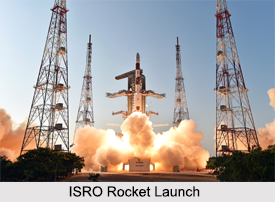 Rocket Launches in India had been one of biggest events of India which includes the processes like designing of rockets with rocket propellants, the thermo vacuum chamber, shock tunnels and reverberation chambers. It further includes the materials, fibre which are tried and verified very carefully. This will further include processes like fin tip control, recovering the payload, deployable antennas, nose-cone ejection and the overall structure of a rocket.
Rocket Launches in India had been one of biggest events of India which includes the processes like designing of rockets with rocket propellants, the thermo vacuum chamber, shock tunnels and reverberation chambers. It further includes the materials, fibre which are tried and verified very carefully. This will further include processes like fin tip control, recovering the payload, deployable antennas, nose-cone ejection and the overall structure of a rocket.
Rocket Launches in India includes some of the prominent rockets which were launched for collecting information as well as developing advanced knowledge. Prominently it includes Rohini family, Centuara I and II and some of the foreign built rockets. Thus Rocket Launches in India can be regarded as the first step towards advanced space technology which gave a new avenue to the scientific development.
Inception of Rocket Launch
Rocket Launches in India began with the designing of the rocket which further begins with the initial checking up of the materials with which the rocket is to be built. Various experiments revealed a number of mathematical formulas that could give shape and structure to the rockets. While much attention is paid towards the casting of a rocket, its basic structure and its overall designing, the scientists also paid some attention towards the material used for building the body of the rocket. As such the scientists introduced the Fibre reinforced plastic often known as FRP which contains high strength-to - weight ratio which is higher that steel, highly resistant to corrosion, good insulation against heat and electricity and transparency to microwave propagation. As such this fibre consists of glass, asbestos, graphite and nylon which work like polyester. These together form the body of a rocket which further depends on other technologies like the fin tip technology that controls the movement of the rocket. The fins and the vanes of a rocket control the speed of the rocket which pierces through the dense layers of the atmosphere. While the jet vanes are placed in the nozzles which can affect the desired change in the attitude of the rocket`s motion, the fin tips on the other hand controls the flow of air around them.
Procedures of Rocket Launch
Rocket Launches in India includes other procedure like recovery of payload which means collecting of data and recover the stored data collected during the flight. Payloads are required to gather information when the rocket is floating in the air which transmits it back to the earth. This requires highly sensitive and strong antennas which are to be secured till they cross the strong and dense atmospheric pressure. The final procedure includes the functioning of the nose - cone ejection which either throws the weight or elects it up to 7 meters per second. In other words it releases the pressure of the heat and ejects to rise up. All this helps to move the rockets and pierce them in the sky.
Satellite Programmes of Rocket Launch
There are various satellite programs which are introduced for launching the Rocket. They are as follows:
•The INSAT Series.
•The IRS Series.
•Radar Imaging Satellites.
•South Asia Satellite.
•GAGAN Satellite Navigation System.
•IRNSS Satellite Navigation System.



















